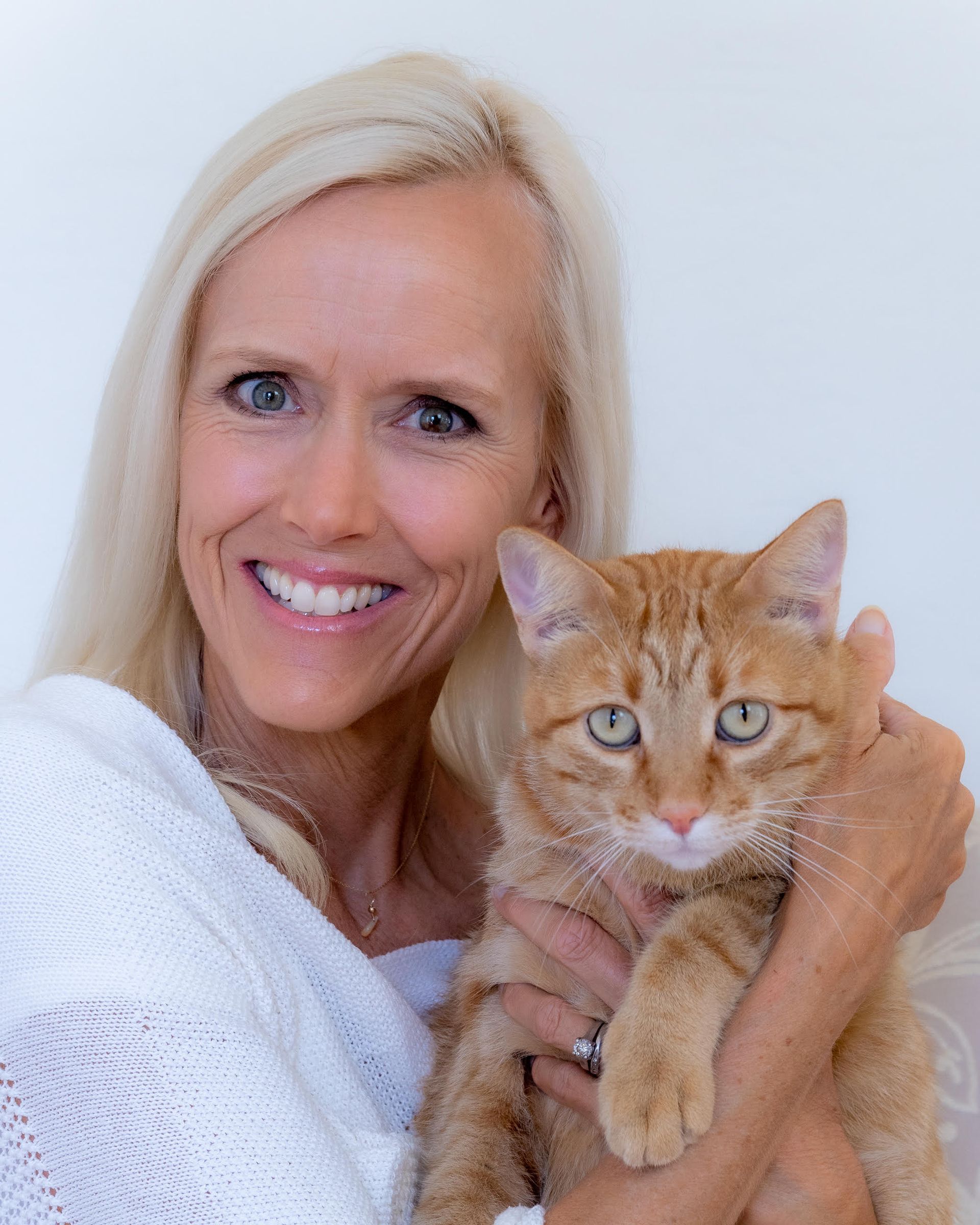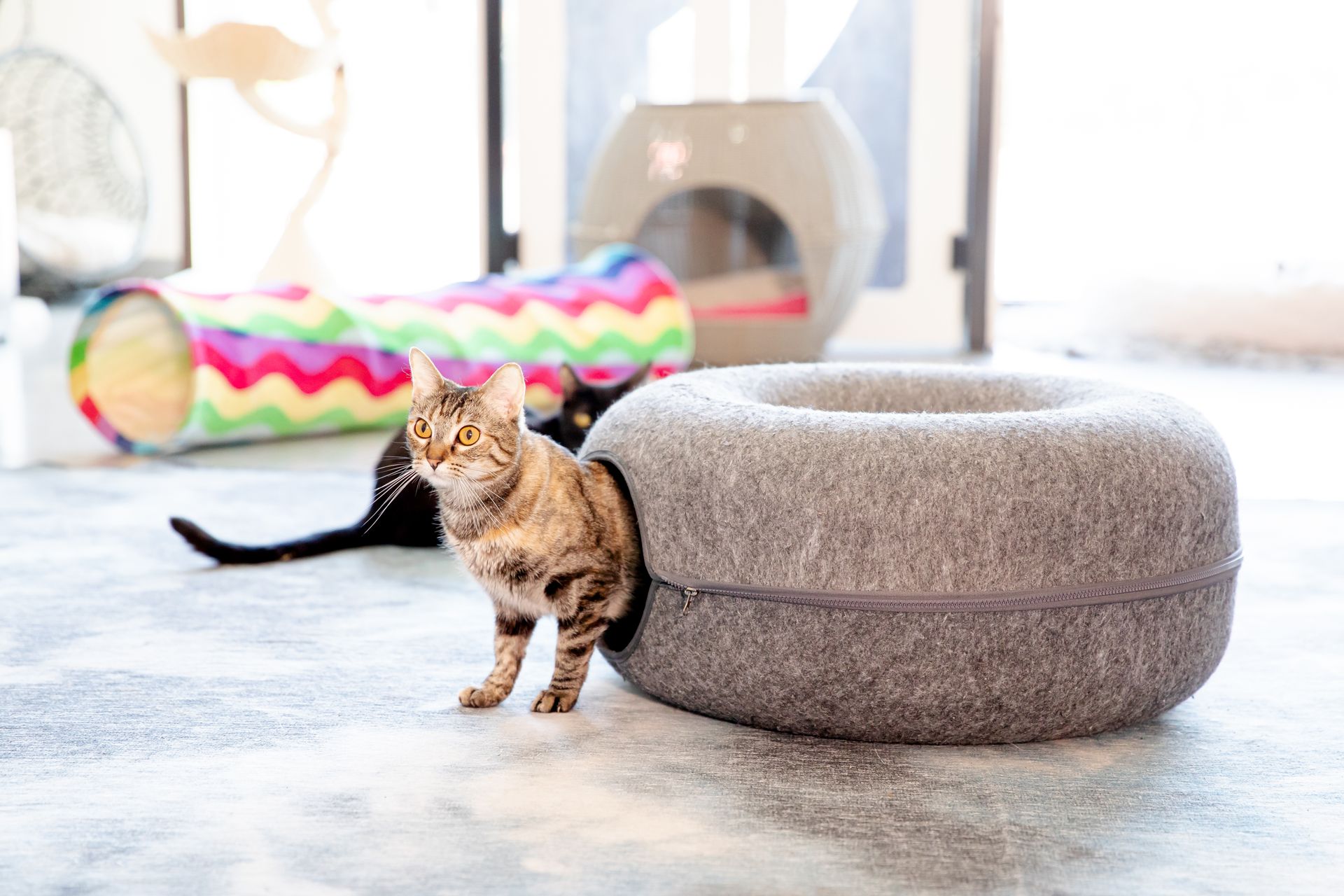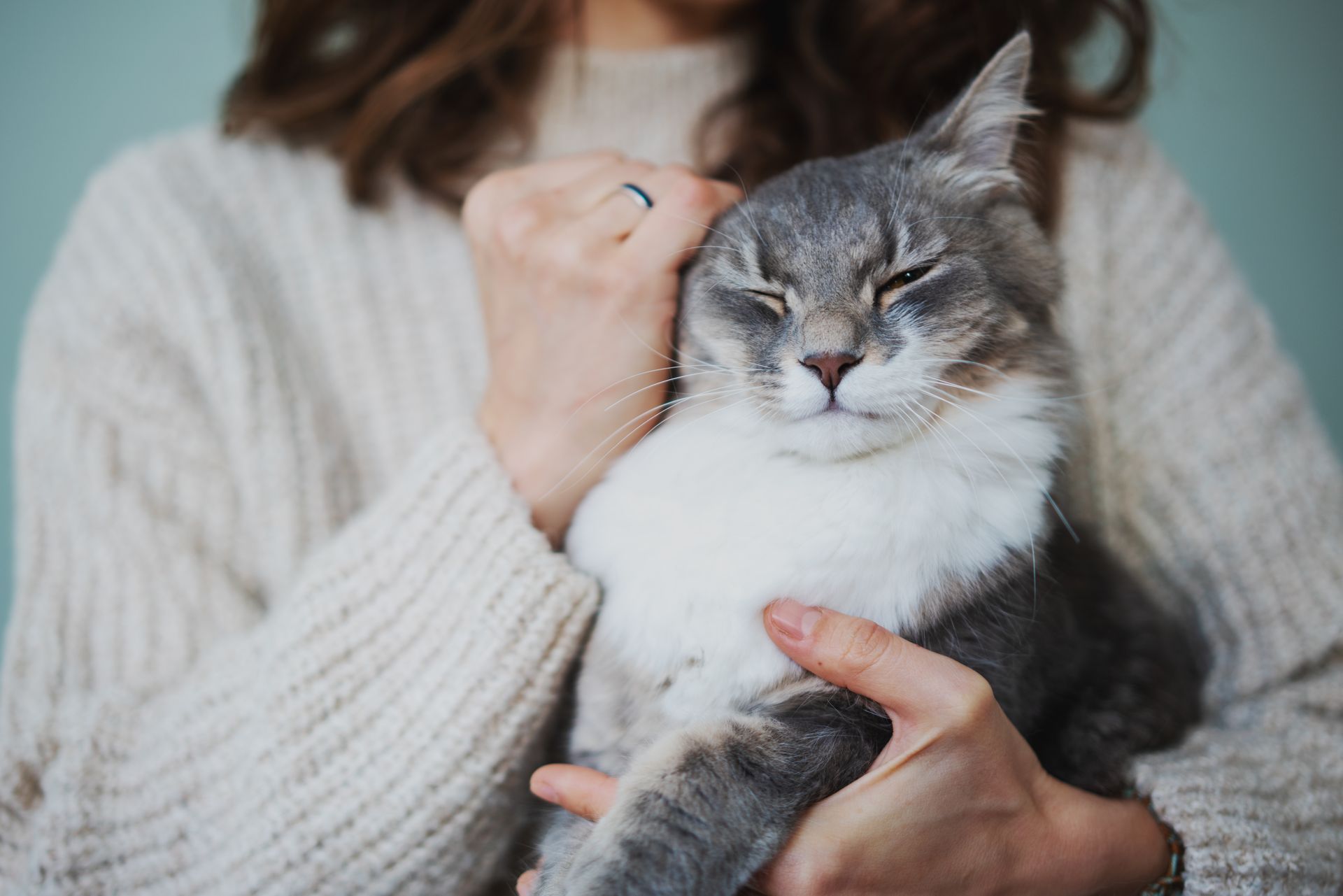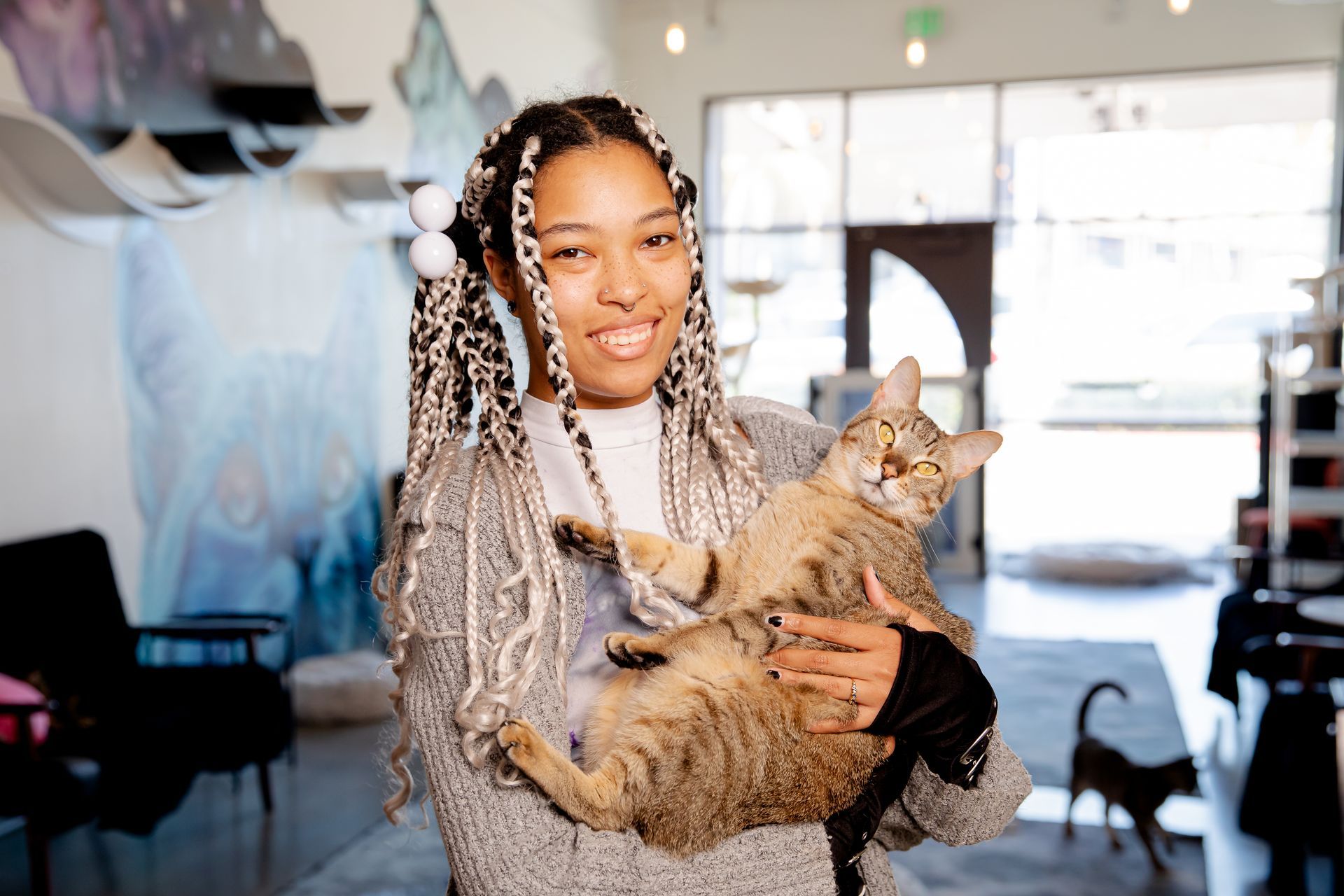Understanding Cat Behavior: What Your Feline Friend Is Trying to Tell You
Cats may not speak our language, but they communicate with us in their own unique ways—through body language, vocalizations, and behaviors. Whether you’re a first-time cat parent or a long-time feline enthusiast, understanding what your cat is trying to tell you can deepen your bond and help you provide the best possible care.
1. Cat Body Language: The Silent Signals
Cats use their body posture, tail movements, and ear positioning to express their emotions. Here’s how to decode their signals:
Tail Talk
- Tail Upright & Relaxed: Your cat is feeling confident, happy, and content. A slight curve at the tip may indicate excitement.
- Puffed-Up Tail: A sign of fear or agitation. Your cat is trying to appear larger to ward off a perceived threat.
- Tail Twitching or Flicking: If the tail is flicking back and forth, your cat may be irritated or overstimulated. It’s a good idea to give them some space.
- Tucked Tail: When a cat tucks its tail between its legs, it shows fear, insecurity, or submission.
Ears & Whiskers
- Ears Forward: Your cat is curious, interested, or engaged.
- Ears Flattened (Airplane Ears): A sign of fear, anxiety, or aggression—your cat is feeling defensive.
- Ears Flicking Back & Forth: This indicates irritation or overstimulation, often before they react.
- Whiskers Forward: Your cat is alert, excited, or focused (such as when hunting or playing).
- Whiskers Pulled Back: A sign of fear or discomfort.
Eyes & Pupil Dilation
- Slow Blinking: The “cat kiss”! A slow blink from your cat is a sign of trust and affection. You can return the gesture to show them love.
- Wide Eyes with Dilated Pupils: This can mean excitement (such as during play) or fear (if they feel threatened). Context is key!
- Narrowed Eyes: Often indicates contentment but can also be a sign of annoyance.
2. Cat Vocalizations: What Different Meows Mean
Cats communicate vocally with a variety of sounds. While every cat has a unique voice, certain vocalizations have common meanings:
- Short, Soft Meow: A greeting or a simple acknowledgment.
- Repeated Meows: Your cat wants attention—whether it’s food, play, or just some love!
- Chirps & Trills: These are often heard when a cat greets a human or talks to another cat. Some cats chirp when they see birds outside the window.
- Purring: Usually a sign of happiness and relaxation. However, some cats also purr when they are stressed or in pain as a self-soothing mechanism.
- Hissing & Growling: A clear sign of fear, discomfort, or aggression. It’s best to back off and give your cat space.
- Yowling or Howling: Can indicate distress, pain, or even boredom. Senior cats may yowl due to cognitive decline. If excessive, consult a vet.
3. Common Cat Behaviors & Their Meanings
Cats exhibit a variety of behaviors that can sometimes seem mysterious. Here’s what they mean:
Kneading ("Making Biscuits")
When your cat presses their paws into your lap or a soft blanket, they’re engaging in kneading—a behavior learned as kittens when nursing. It’s a sign of comfort, contentment, and even affection.
Head-Butting (Bunting)
Consider it a compliment if your cat gently bumps their head against you! This is a way for cats to mark you with their scent and show affection.
Bringing You "Gifts"
Whether it’s a toy or (if they go outside) a real prey animal, cats bring their humans “gifts” as a sign of love, appreciation, or an attempt to “teach” you how to hunt.
Rolling Over & Showing Their Belly
While a dog showing their belly means "pet me," with cats, this is a sign of trust. Some cats enjoy belly rubs, but for others, it’s a trap—so proceed with caution!
The Zoomies (Sudden Bursts of Energy)
If your cat suddenly sprints around the house, they’re experiencing the "zoomies." This is a way to burn off excess energy, often seen after a nap or late at night.
Scratching Furniture
Cats scratch to mark territory, stretch their muscles, and maintain their claws. Providing scratching posts can help redirect this natural behavior.
Licking You
When a cat licks you, they’re either grooming you (which means they consider you part of their family) or tasting something interesting on your skin.
4. Understanding Cat Affection
Cats express love in many subtle ways. Here’s how to know if your cat loves you:
- Slow Blinks: Your cat is giving you a “kitty kiss.”
- Following You Around: They want to be near you and feel safe in your presence.
- Sleeping Near You or on You: This is the ultimate sign of trust—your cat feels secure enough to be vulnerable around you.
- Gentle Nibbles: Light, playful nibbles can be a sign of affection (though some cats get carried away, so be cautious!).
5. Recognizing Signs of Stress or Illness
While many cat behaviors are normal, some may indicate stress or health issues. Watch for these signs:
- Hiding More Than Usual: Could indicate anxiety, illness, or fear.
- Excessive Grooming or Bald Patches: May be a sign of stress, allergies, or skin conditions.
- Sudden Aggression: Could be due to pain, fear, or overstimulation.
- Changes in Appetite or Litter Box Habits: Always a reason to consult a vet.
Strengthening Your Bond Through Understanding
Cats may have a reputation for being mysterious, but once you understand their behaviors and body language, you’ll realize they’re constantly communicating with you. You can better meet their needs and deepen your connection by paying attention to their signals—whether it’s a slow blink, a tail flick, or a particular meow.
At Cat & Craft, we love helping people learn more about feline behavior while providing a cozy space to interact with adoptable cats. Whether you're an experienced cat parent or thinking about adoption, understanding cat behavior is the first step in building a lifelong bond with your furry friend.
Want to practice your cat communication skills?
Stop by Cat & Craft and spend some time in our cat lounge—you might just find a new feline friend who speaks your language! 🐱☕





